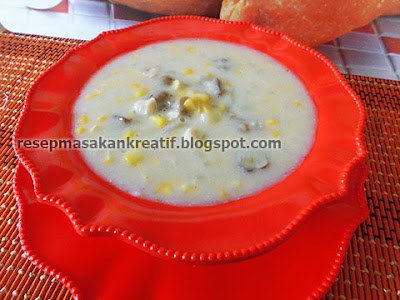
Photo Credit - CDC PHIL
# 10,471
Roughly 18 years ago, a study looked at the rate of heart attacks in the United States, and found that Acute Myocardial Infarctions (AMIs) run as much 53% higher during the winter months than than during the summer.
While numerous theories have been offered (holiday stress, cold weather, over-indulgence during the holidays, etc.), a growing number of studies have suggested that Influenza - and other acute respiratory infections - can act as a trigger for heart attacks (see Study: Influenza And Heart Attacks).
Assuming that flu is a major trigger for heart attacks, then it stands to reason that the flu vaccine ought to provide some measurable level of protection against them. And over the years we’ve looked at a number of studies that have attempted to quantify that number.
- In 2010 we saw a study in the CMAJ: Flu Vaccinations Reduce Heart Attack Risk that found that those over the age of 40 who get a seasonal flu vaccine each year may reduce their risk of a heart attack by as much as 19%. Questions were raised over the way this study was conducted (see Vaccine/Heart Attack Study Questioned), and so the results are in dispute.
- In August of 2013 (see Study: Flu Vaccine May Reduce Heart Attack Risk), we looked at study out of Australia – published in the BMJ Journal Heart, that found compelling – but not exactly conclusive – evidence that flu shots may reduce the risk of heart attacks as much as 45%.
- In October of 2013 (see JAMA: Flu Vaccine and Cardiovascular Outcomes) we looked at a meta analysis that found among patients who had previously had a heart attack, the receipt of a flu vaccine was linked to a 55% reduction in having another major cardiac event in the next few months.
Complicating matters, those who are most likely have cardiac events (> 65) are also the cohort least likely to derive optimal protection from the flu vaccine (see NFID: The Challenges Of Influenza In Older Adults). There is some evidence, however, that even when it doesn’t prevent infection, the flu vaccine may reduce the severity of illness (CDC: Flu Shots Reduce Hospitalizations In The Elderly).
Building on the 2013 Australian BMJ study mentioned above, researchers at the University of New South Wales have put together a new meta analysis which further supports the link between getting the flu jab, and reducing the risks of having a heart attack.
First the link to the study, and a press release, after which I’ll return with a bit more.
Acute myocardial infarction and influenza: a meta-analysis of case–control studies

Michelle Barnes, Anita E Heywood, Abela Mahimbo, Bayzid Rahman, Anthony T Newall, C Raina Macintyre
Published Online First 26 August 2015
Abstract
Objective Acute myocardial infarction (AMI) is the leading cause of death and disability globally. There is increasing evidence from observational studies that influenza infection is associated with AMI. In patients with known coronary disease, influenza vaccination is associated with a lower risk of cardiovascular events. However, the effect of influenza vaccination on incident AMI across the entire population is less well established.
Method The purpose of our systematic review of case–control studies is twofold: (1) to estimate the association between influenza infection and AMI and (2) to estimate the association between influenza vaccination and AMI. Cases included those conducted with first-time AMI or any AMI cases. Studies were appraised for quality and meta-analyses using random effects models for the influenza exposures of infection, and vaccination were conducted.
Results 16 studies (8 on influenza vaccination, 10 on influenza infection and AMI) met the eligibility criteria, and were included in the review and meta-analysis. Recent influenza infection, influenza-like illness or respiratory tract infection was significantly more likely in AMI cases, with a pooled OR 2.01 (95% CI 1.47 to 2.76). Influenza vaccination was significantly associated with AMI, with a pooled OR of 0.71 (95% CI 0.56 to 0.91), equating to an estimated vaccine effectiveness of 29% (95% CI 9% to 44%) against AMI.
Conclusions Our meta-analysis of case–control studies found a significant association between recent respiratory infection and AMI. The estimated vaccine effectiveness against AMI was comparable with the efficacy of currently accepted therapies for secondary prevention of AMI from clinical trial data. A large-scale randomised controlled trial is needed to provide robust evidence of the protective effect of influenza vaccination on AMI, including as primary prevention.
Some excerpts from the UNSW press release follow:
UNSW study finds flu jab provides significant protection against heart attacks
27 Aug 2015
Dan Wheelahan
If you’re over 50 and get the flu jab, you’ll not only help to keep the dreaded lurgy at bay but you could also reduce your risk of a heart attack.
That is the advice of UNSW researchers after their study estimated a vaccine effectiveness of 29% in preventing heart attacks which is on par with other heart attack preventative measures.
Previous studies have estimated the effectiveness of statins for the secondary prevention of heart attacks at 25%, anti-hypertensives (15-18%) and smoking cessation interventions (26%).
Researchers in the School of Public Health and Community Medicine (SPHCM) conducted a systematic review and meta-analysis of 16 international case control studies to estimate the association of influenza and vaccination with heart attacks.
They found significant associations between influenza infection and heart attacks, with heart attack patients twice as likely to have recently had the flu. Their review also confirmed existing evidence, including their own 2013 study, which found that the flu vaccination could lower the risk of a heart attack by 45%.
The study was published today in the journal Heart.
Although the `street creds’ of the flu vaccine took a major hit last winter after the late arrival of a `mismatched’ H3N2 virus (see CDC: Updated Estimated Seasonal Flu Vaccine Effectiveness), most years the flu vaccine provides a `moderate’ level of protection. Something on the order of 40%-60% Vaccine Effectiveness (VE).
As we’ve discussed before, there is a pressing need for better flu vaccines (see CIDRAP: The Need For `Game Changing’ Flu Vaccines).While far from perfect - the flu shots we have remain the best preventative action you can take against the flu.
And while not conclusive (more research is needed), the evidence suggests it may also be one of the best preventative actions you can take against having a heart attack as well.
Which is more than enough reason that I’ll be rolling up my sleeve again this year for the flu shot.






























 src="https://blogger.googleusercontent.com/img/b/R29vZ2xl/AVvXsEh4zgoKkY5esDyGDfXmhp5tz0W8H2jEgsRJx2wm9317hpr6CTdO8i4DPQj5mF-OAprw6GVcNt84Pt9Yp5U6XEz5h_pAP7azclFEO7kSUzDjr31IvLdzT01usqHnjVk1bBWsqpHQX6G4AIU/s1600/Photo0783.jpg" />
src="https://blogger.googleusercontent.com/img/b/R29vZ2xl/AVvXsEh4zgoKkY5esDyGDfXmhp5tz0W8H2jEgsRJx2wm9317hpr6CTdO8i4DPQj5mF-OAprw6GVcNt84Pt9Yp5U6XEz5h_pAP7azclFEO7kSUzDjr31IvLdzT01usqHnjVk1bBWsqpHQX6G4AIU/s1600/Photo0783.jpg" />










